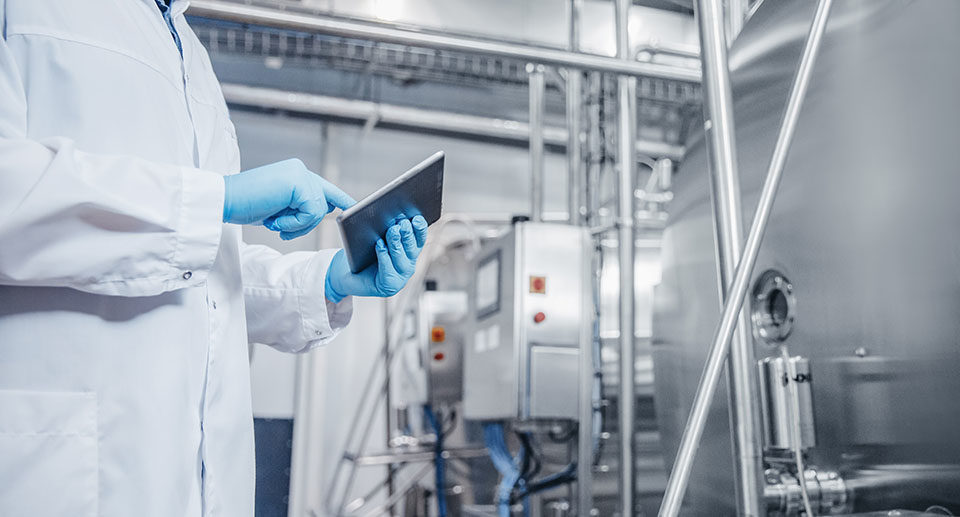KANSAS CITY, MO -- Meeting simultaneous needs for automation, sustainability and sanitation is the driving force behind new innovations in dairy processing equipment, and while automation in manufacturing is not a new trend, the current workforce shortage is causing dairy processors to place an even greater emphasis on automation than ever before.
“For a long time, companies have migrated toward automation, but with a difficult time finding a workforce, we are seeing an even bigger push into automation,” said Bruce Blanchard, director and head of separation sales at GEA North America.
To this end, GEA has introduced its PerformancePlus condition monitoring technology for equipment. Blanchard said this innovation alerts processors in real-time when something changes in the equipment and pinpoints if it is a temporary issue or a bigger problem that might result in a failure. He said this in turn allows for less down time due to unnecessary preventive maintenance as the system can pinpoint exactly when work needs to be done to prevent a failure.
Not all pieces of equipment on a system work equally as hard, Blanchard emphasized. In some cases, a particular valve might move once an hour, but in other applications that same valve might only move once a day. As a result, they even have artificial intelligence built into the system to learn when different parts need maintenance.
Additionally, Blanchard said energy efficiency in processing has been steadily increasing over the years. He said when belt-drive machines were first introduced about 20 years ago, they increased energy efficiency from about 60-70% to about 90%. When they introduced direct-drive machines a few years ago, efficiency increased up to 93%.
Max Davis, general manager with Waldner North America, echoed the importance of automation.
“We are seeing an increased focus on advanced systems automation for front-end and back-end processes with particular attention being spent in how they can best distribute their maintenance and operations staff,” Davis said.
FULL AUTOMATION
Julian Stauffer, chief executive officer of Waldner North America, said the company is providing box-to-box solutions for its customers, which means automating the entire process from the unloading of packaging out of the box all the way through to case packaging filled and sealed packages. Additionally, they have added features, such as dual cup buffer magazines, to the machines to make seamless changeovers from one cup diameter to another.
“The Waldner DOSOMAT Machines are able to work with a variety of newer packaging materials and films, such as mono layered plastic pouches and spouted pouches for the polyethylene and polypropylene in store plastic recycling streams,” Stauffer said. “We also have experience working with paper-based cups and compostable films, which we hope will continue to become more prevalent in the packaging industry globally. Furthermore, there is balance in everything. There is still a place in the market for the plastic cup, metal can, and glass jar, which are all recyclable. Waldner has filling and sealing solutions for each of these packaging solutions, which will each have their place in the market in the long run.”
Blanchard said in the future GEA will continue to work with their artificial intelligence technologies. He said they are already working with virtual twinning, or modeling what a machine is doing virtually. The process behaves like the machine, and they can run it to find efficiency points, failure points, and synergy between machines. He said they are even using this to develop new machinery.
“Prototyping can be done on this virtual twin,” Blanchard said. “It should shorten the development cycle.”
Blanchard said they will also continue to work on machine learning where the machine collects data in real-time and tweaks its algorithms from what it learns.
KEEPING UP
John Kuhnz, vice-president of engineered solutions with Dorner Manufacturing Corporation, said automation can take different forms, and one challenge in automation comes when the processing equipment runs slower than packaging equipment.
“The challenge of merging processing lines into one continuous flow to packaging varies from application to application,” Kuhnz said. “Dorner has several solutions in the toolbox that we can apply to an application, but it is unlikely some modifications will not be required. With the various product sizes, rates, environments and carton sizes, what makes the merging successful is understanding what is required and engineering the right solution from the toolbox of options.”
Kuhnz said creating sanitary systems often comes at a cost as stainless steel is expensive. He said they work to meet capabilities for cleanliness while trying to keep costs reasonable. Dorner, which is based in Hartland, Wis., also uses magnetic drives that boost energy efficiency by simply using less energy and requiring less energy to clean.
“With the right design and education on how to address the conveyor, we expect to reduce time to clean by understanding areas to focus on and reducing areas requiring focus,” Kuhnz said. “This will result in less chemical needed, less energy needed to heat the water, and less water used.”
Omega Engineering, Norwalk, Conn., has also recently introduced a HANI clamp-on temperature sensor. The sensor attaches to piping systems in seconds without interrupting product flow or production and requires zero contact with products. It helps prevent pipe clogging and waste as well as potential contaminants and sensor drift associated with such buildup.
“Installing or relocating an invasive in-pipe sensor can be a costly, time-consuming process,” said Ahmar Bajwa, director of product management with Omega Engineering. “With HANI sensors, customers do not need to worry about immersion depth, material compatibility, corrosion, or contamination risks. And there’s no loss of performance, so it’s really a best-of-both-worlds approach.”
Moving forward, Stauffer said flexibility and reliability in packaging systems will be key.
“Customers will continue ask us for more flexibility while expecting a high level of reliability, and we will continue to adapt to these needs of our customers,” Stauffer said. “That is where the new equipment innovations will be discovered.”

